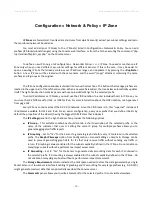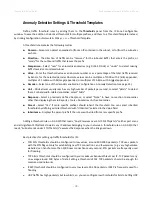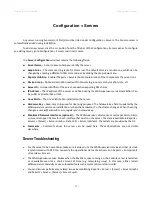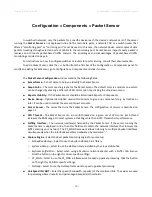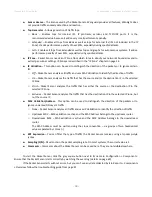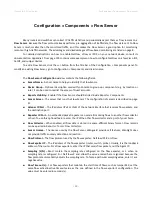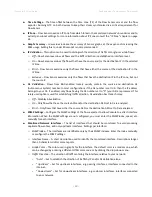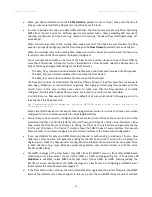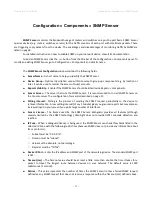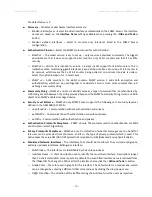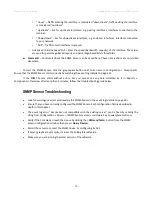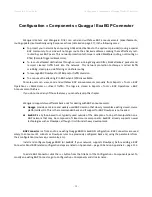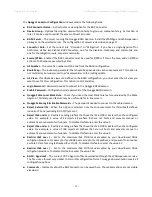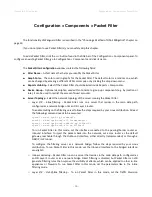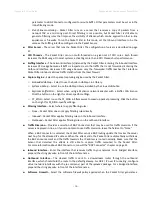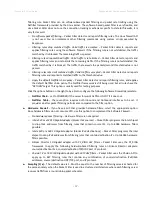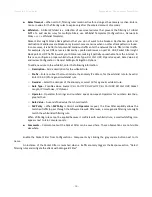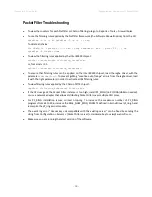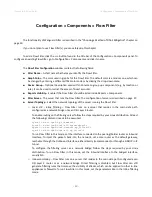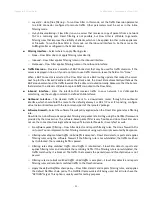
Wanguard 6.2 User Guide
Configuration » Components » SNMP Sensor
Configuration » Components » SNMP Sensor
SNMP Sensor
monitors the bandwidth usage of routers and switches on a port-by-port basis. SNMP Sensor
queries devices (e.g. routers, switches, servers) for the traffic counters of each port with small data packets. These
are triggering reply packets from the device. The advantages and disadvantages of monitoring traffic by SNMP are
listed on page 8.
For detailed instructions on how to enable SNMP on your network device, consult its documentation.
To add an SNMP Sensor click the <+> button from the title bar of the Configuration » Components panel. To
modify an existing SNMP Sensor, go to Configuration » Components and click its name.
The
SNMP Sensor Configuration
window contains the following fields:
●
Sensor Name
– A short name to help you identify the SNMP Sensor.
●
Device Group
– Optional description used within Console to group up components (e.g. by location or
role). It can be used to restrict the access of Guest accounts.
●
Reports Visibility
– Enable if the SNMP Sensor should be listed inside Reports » Components.
●
Sensor Server
– The server that runs the SNMP Sensor. It is recommended to run all SNMP Sensors on
the Console server. The configuration of servers is described on page 37.
●
Polling Interval
– Polling is the process of sending the SNMP request periodically to the device to
retrieve information. A low polling interval (of say 1 minute) gives you granular reports but may place an
increased load on your server if you poll a large number of interfaces.
●
Sensor License
– The license used by the SNMP Sensor. Wanguard provides all features (although
severely limited by the SNMP technology); WanSight does not provide traffic anomaly detection and
reaction.
●
IP Zone
– When a Wanguard license is being used, the SNMP Sensor can check thresholds listed in the
selected IP Zone with the following restrictions (because SNMP does not provide any information about
IPs or protocols):
○
Subnet must be “0.0.0.0/0”.
○
Domain must be “subnet”.
○
Value must be absolute, not percentage.
○
Decoder must be “TOTAL”.
●
Device IP:Port
– Enter the IP address and SNMP port of the networking device. The standard SNMP port
is 161.
●
Timeout (ms)
– The timeout value should be at least a little more than double the time it takes for a
packet to travel the longest route between devices on your network. The default value is 1000
milliseconds (1 second).
●
Retries
– This value represents the number of times the SNMP Sensor retries a failed SNMP request
defined as any SNMP request that does not receive a response within the Timeout (ms) defined above.
- 47 -
Summary of Contents for wanguard 6.2
Page 1: ......


